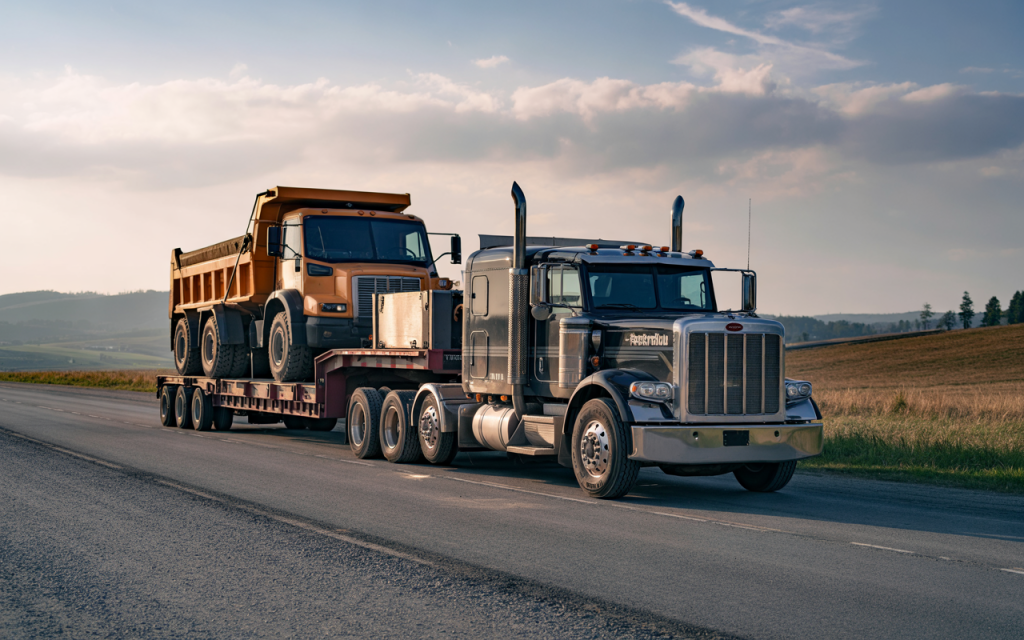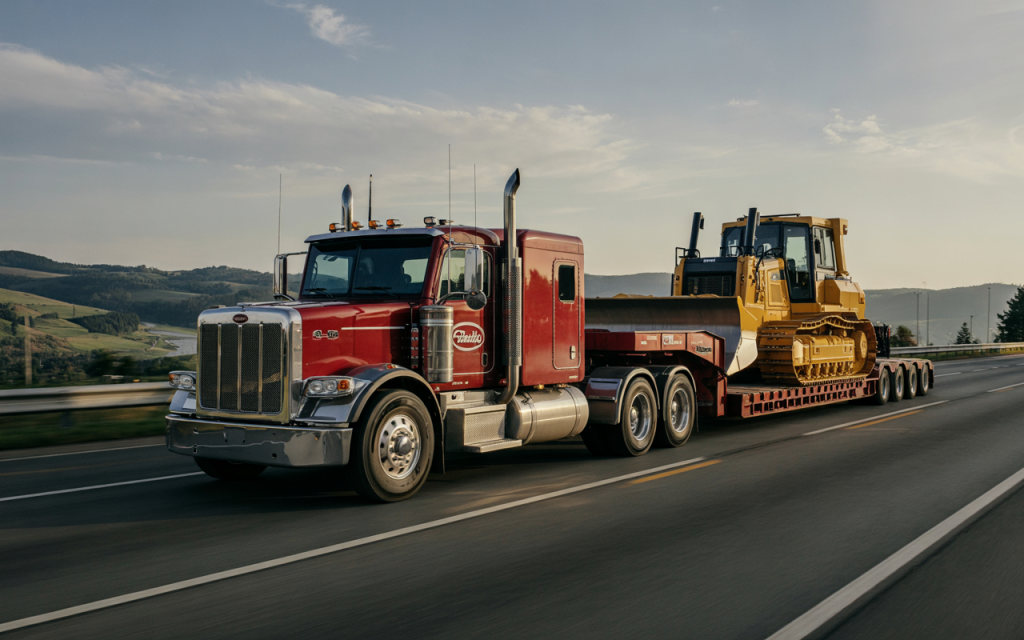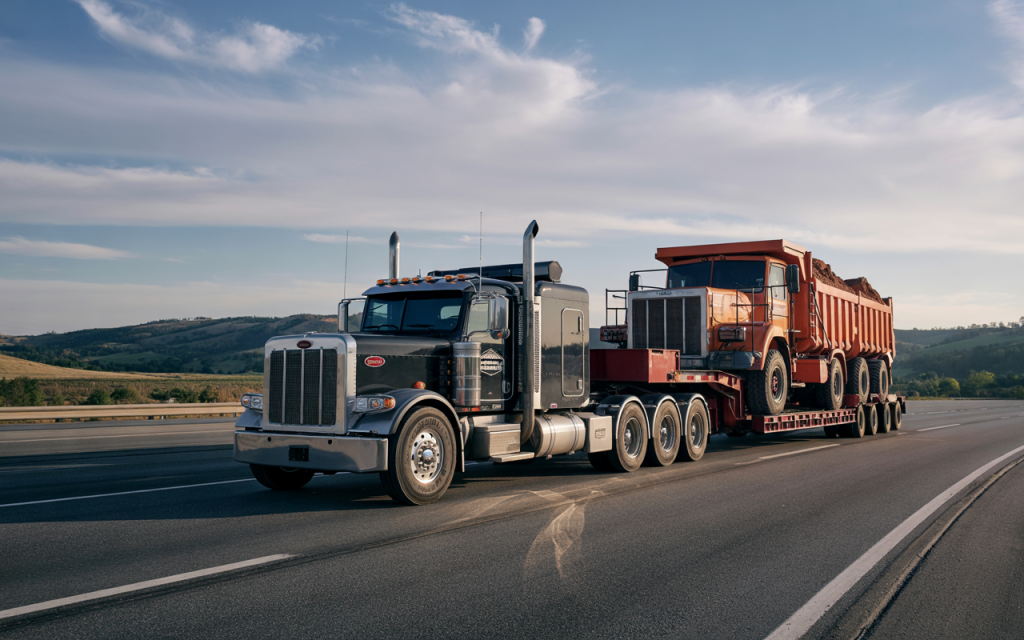How We Plan Heavy Haul Routes in Iowa to Avoid Delays and Ensure Safety
Freedom Heavy Haul can offer expedited Pickup and Delivery for any size shipment anywhere in the USA. Contact us today for No Hassle, No Pressure Pricing.
To move oversized or overweight loads through Iowa, we design routes that are safe, legal, and efficient. Route planning is one of the most critical steps we take – it’s not just about mapping the distance, but about making sure the load avoids fines, protects infrastructure, and arrives on time.
In this article, you will learn how we plan heavy haul routes in Iowa that helps us avoid delays and ensure safety.
Regulatory Oversight Begins with Iowa DOT Permits
Before anything moves, we at Freedom Heavy Haul work with the Iowa Department of Transportation (Iowa DOT) to make sure all legal requirements are met. Permits are required for every oversized or overweight shipment in the state.

How We Use IAPS to Secure Permits
We rely on the Iowa Automated Permitting System (IAPS) to apply for permits. This system automatically checks our proposed route against:
- Bridge weight limits
- Construction zones
- Height and width restrictions
- Seasonal or environmental closures
Types of Permits We Apply For
We choose between:
- Single-Trip Permits – For one-time moves along a specific route
- Annual Permits – For regular shipments using the same vehicle configuration
Each application includes full load details: dimensions, weight, axle distribution, trailer specs, and the planned path.
Infrastructure Assessment Is Critical to Route Design
Route approval doesn’t guarantee that the road can physically support the load. That’s why Freedom Heavy Haul performs a detailed infrastructure review before finalizing any route.
Bridge Ratings and Load Limits
Iowa has thousands of bridges, and many have structural limitations. If a route includes a bridge that can’t support the weight, we adjust the plan before submission.
This process helps us prevent delays, reroutes, or potential damage during transport.

Road Conditions and Physical Constraints
Even if a route is legal, it may not be safe or practical. We examine:
- Overhead clearance
- Road and shoulder width
- Turning radii at intersections
- Road slope, grade, and surface condition
Coordination with Local Authorities and Utilities
Many of our heavy haul shipments pass through county roads, towns, or rural areas where state permits alone aren’t enough.
Why We Work with Local Agencies
We notify and coordinate with:
- County and city officials for road approvals
- Utility companies for overhead line lifts
- Public works teams for possible tree trimming
In some cases, we may be required to schedule the move during certain hours or arrange for local police escorts.
How We at Freedom Heavy Haul Use Technology to Avoid Delays
We use a combination of state tools and in-house technology to plan and validate every move.

Tools That Help Optimize Routes
- IAPS simulates the actual movement of the load, identifying problem areas before they happen
- GIS Mapping helps us spot terrain and infrastructure challenges
- Live Traffic Data allows us to time moves to avoid rush hours and construction zones
These tools help us avoid trial-and-error mistakes and keep shipments on schedule.
Accounting for Seasonal and Environmental Challenges
Timing matters in Iowa, especially during spring thaw, flood season, and agricultural harvest.
Seasonal Load Restrictions
During freeze-thaw cycles, some roads are restricted to prevent long-term pavement damage. These routes may become inaccessible without a lighter load or a revised plan.
Flooding and Rural Traffic Delays
Low-lying areas near the Mississippi or Missouri rivers may become impassable during storms. We monitor weather forecasts and river levels and have alternate plans ready.
During harvest season, rural roads often experience high traffic. In those cases, we adjust timing or reroute to avoid congestion.
Escort Vehicles and Safety Measures
Oversize loads often require pilot or escort vehicles — especially when traveling on complex or busy routes.
How We Ensure Load Safety
We follow Iowa DOT’s guidelines and coordinate:
- Pilot cars for front and rear escort
- Law enforcement for high-risk or urban areas
- Radios, signs, flags, and lights for communication and visibility
We never start a haul without making sure safety measures are in place.
Example: Wind Turbine Component Transport
One of the largest and most sensitive types of heavy haul is wind energy equipment. A single turbine blade can be over 180 feet long.
What These Moves Involve
- Specialized trailers
- Real-time simulations
- Coordinated utility and municipal support
- Staging zones and low-traffic scheduling
We treat similar loads with the same level of engineering, planning, and coordination.
Summary: Why Our Route Planning Method Works in Iowa
Freedom Heavy Haul plans every heavy haul shipment in Iowa with a clear focus: safety, compliance, and efficiency. Permits, bridge capacity, road condition, seasonal timing, and local coordination all factor into how we build routes that actually work in practice.
This process protects our clients from delays, penalties, and risk — and ensures each load reaches its destination as planned.
Frequently Asked Questions about How We Plan Heavy Haul Routes in Iowa
Here are some questions and answers:
Do I need a permit for an overweight load in Iowa?
Yes, any load that exceeds legal weight or size limits must be permitted through IAPS.
What’s the difference between a single-trip and annual permit?
Single-trip permits are for one-time moves. Annual permits are used for repeat shipments using the same vehicle setup.
Can my proposed route be denied?
Yes. If the route includes bridges or roads that can’t handle your load’s weight or size, Iowa DOT will require changes.
Do I need local approval in addition to state permits?
Yes, especially if the route includes non-state roads or utility issues. We always coordinate with local authorities ahead of time.
Are escort vehicles required for all oversize loads?
Not always, but they are common for wider or longer loads. Requirements vary based on size, route, and risk level.







